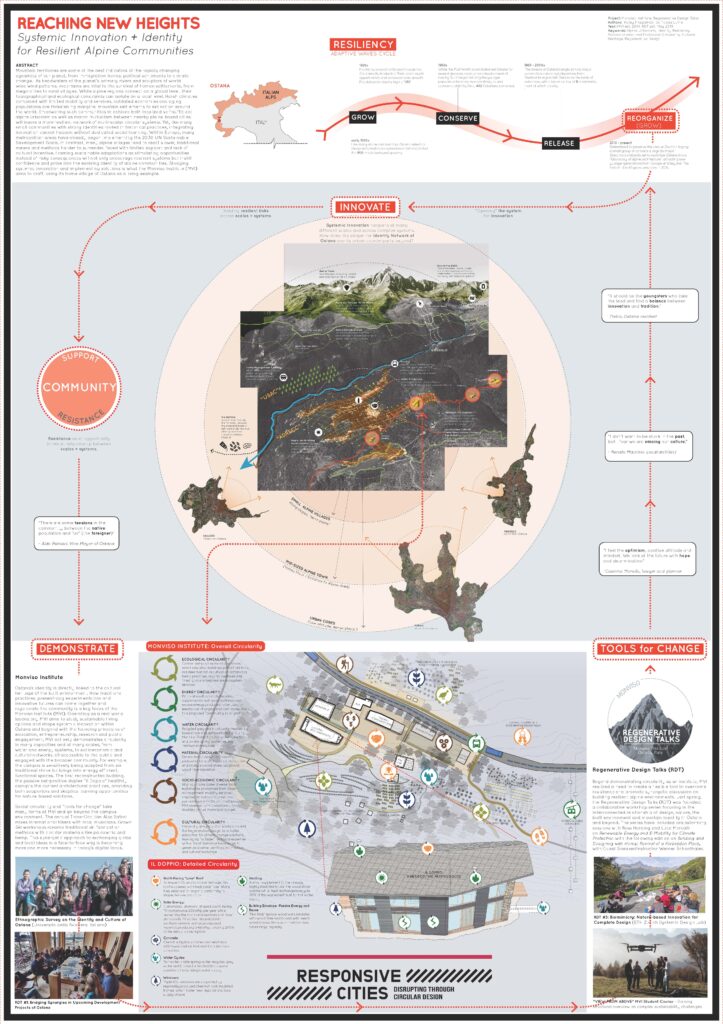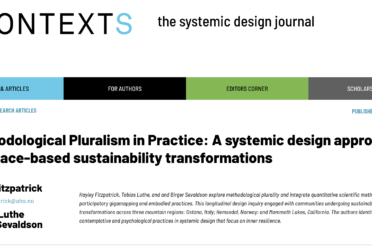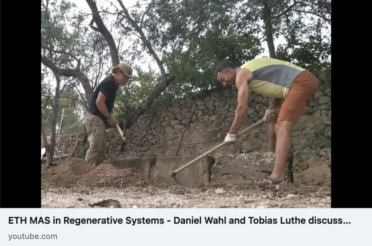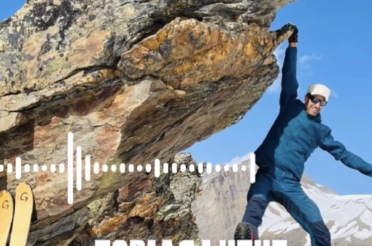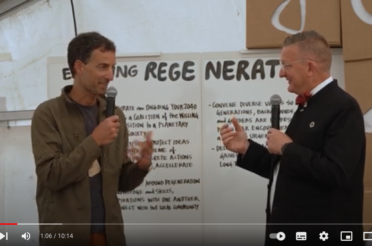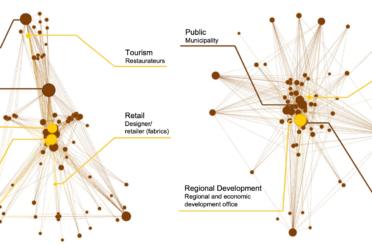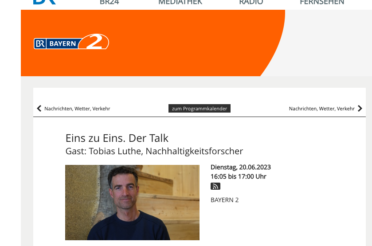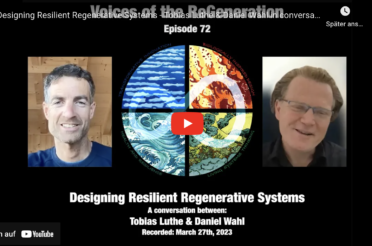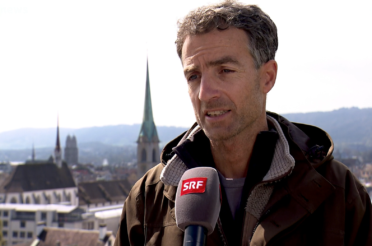Reaching New Heights
Systemic Innovation and Identity for Resilient Alpine Communities
A systems-oriented design poster on circularity and regeneration by Haley Fitzpatrick and Tobias Luthe – first published at the Responsive Cities Conference, iaac Barcelona, Nov. 2019
This poster entitled “Reaching New Heights” showcases systemic innovation in relation with cultural identity for resilient alpine communities on the case of the MonViso Institute in the community of Ostana, Italian Piedmont mountains. In this context, the Monviso Institute (MVI) as real-world laboratory for sustainability transitions and systemic regenerative design experiments with circular design solutions on various scales. This poster highlights some of the designed circularities on different scales, from materials to buildings to the evolving MVI campus, to the surrounding Po Valley and the regional scale, and sets them into context of the resiliency development phases.
The poster is setup in this logical way: First, it describes the context of mountain communities and their efforts to resist outmigration and abandonment due to socio-economic changes, and to adapt to strong impacts of climate change. We use the resilience framework “Adaptive Waves” (Luthe and Wyss 2015) to show that Ostana went through a serious crisis, a release phase, leading to a historical low of inhabitants and economic activities. Today, Ostana is between a reorganization and a new growth phase, where the mayor has been working to transform Ostana into an “alpine laboratory” with a new kind of economy that is more resilient, meaning it has a higher adaptive and innovative capacity to withstand undesired changes. Such resilient systems that regenerate can be found in nature, and they function circular, based on shared resources, on no waste existing, and on cooperation – across scales and system boundaries.
The MVI engages in regenerative design of such circular systems, and in this case experiments with circularity on different nested scales, making circular thinking and designing tangible, accessible, illustrative, and evaluating the benefits for systemic innovation of the Ostana and Valle Po economy, to become more resilient. Implementing such systemic innovation, for example in the locally protected type of stone building architecture, requires cooperation of and within the community; change brings up resistance, though, too. The MVI demonstrates different types of circularity as practical solutions – ecological, energy, water, material, and socio-economic circularity – in order to break resistance and empower the community to proceed building up new desired resilience. The MVI “tools for change” such as the Regenerative Design Talks, the support of student research, the “Doppio” demonstration building on campus, and professional trainings are concrete applications that support the transition path and new resiliency growth phase of Ostana.
Further context
Mountains are some of the best indicators of the rapidly changing dynamics of our planet, from immigration trends, political sentiments to climate change. While they connect globally, topographic constraints tend to isolate locally: harsh climates, limited access and services, aging populations and outdated economies have culturally and ideologically isolated many alpine villages from the recirculation of new energy and innovation that is often seen in urban areas.
Empowering these communities to achieve both localized self-sufficient alpine urbanism as well as macro-mutualism between nearby plains-based cities will insure a more resilient network of multi-scalar circular systems.
Yet, like many small communities with strong identities rooted in historical practices, integrating innovation cannot happen without dedicated social learning. Within Europe, many metropolitan areas have already begun implementing the 2030 UN Sustainable Development Goals. In contrast, many alpine villages tend to react slower, traditional means and methods harder to surrender, faced with limited support and lack of cultural incentive. Framing sustainable adaptations as stimulating opportunities instead of risky consequences will not only encourage resilient systems but instill confidence and pride into the evolving identity of alpine communities.
Ostana’s identity is directly linked to the cultural heritage of the built environment, resonating from the Occitan culture. How traditional practices, present-day experimentation and innovative futures can come together and regenerate the nested systems is a key focus of the Monviso Institute’s (MVI) work. Operating as a real-world laboratory, MVI studies sustainable living options and shapes systemic regenerative innovation within Ostana and beyond with the founding principles of research, education, entrepreneurship, and public engagement. MVI actively demonstrates circularity in many capacities and at many scales, from water and energy systems, to socio-economic and cultural networks, all accessible to the public and engaged with the broader community. For example, the campus is sensitively being adapted from six traditional stone buildings into energy-generating, functional spaces. The first reconstructed building, the passive net-positive duplex “Il Doppio” healthily disrupts the current architectural practices, providing both supporters and skeptics learning opportunities for nature-based solutions.
Social circularity and “tools for change” take many forms at MVI and go beyond the campus environment. The annual Trans-Occitan Alps Safari mixes international skiers, hikers and bikers with local musicians. Grown Skis design workshops revamp traditional ski fabrication methods with circular materials like paulownia and hemp. This synergetic approach to exchanging global and local ideas in a face-to-face way is becoming more and more necessary in today’s digital focus. Beyond demonstrating circularity as an institute, MVI realized a need to create a flexible tool to overcome resistance and promote synergetic discussion on building resilient alpine environments. In spring 2019, the Regenerative Design Talks (RDT) were founded; a collaborative workshop series focusing in the interconnected relationship of design, nature, the built environment and mountain identity in Ostana and beyond. The series have included brainstorming sessions with renown climate scientists and sustainable city innovators on renewable energy and e-mobility for climate protection, on nature-based solutions in architecture, and hands-on practices in designing with Hemp, again inviting leading experts in the field.
